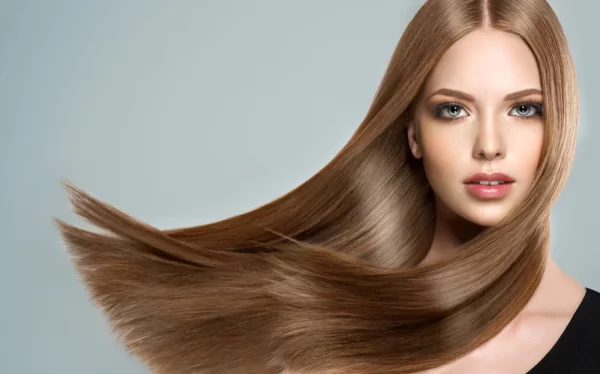Straight Hair Treatments
Our hair is becoming more frizzy as the extreme heat of summer approaches us, and our determination to fight it daily is waning as a result. However, before you run out and spend an arm and a leg on a trendy new hairstyle, you should check out our rankings of straight hair treatments to determine which one could be the greatest investment for your beautiful straight hair.
Flat Iron
Indeed, this isn’t exactly a straight hair treatment, but for those just starting, using a flat iron is the most straightforward way to control frizzy hair until you shampoo it again. Before using a flat iron to straighten your hair, you should make sure that it is totally dry. This will prevent any additional damage from occurring to your hair. Because straightening your hair can cause it to get dry and brittle, you should constantly employ a heat-protecting spray and try to avoid using a straightener on days when you do not require one.
If you want to reduce the amount of damage done to your hair, you should consider using ionic hair straighteners. These straighteners make use of negative ions to break down water molecules on the surface of the hair, which in turn reduces frizz and leaves the hair looking smoother and more shiny. It is less harmful to the hair because they do not require excessive heat to function.
Re-Bonding Of The Hair
Hair can be straightened, made lustrous, and made sleek with the use of a chemical procedure called re-bonding. After breaking the natural structure of the hair with a cream or relaxing softener, the next step in the process of re-bonding the hair is to use a neutralizer to make the structure back together again. It is recommended for individuals who have difficulty controlling their thick or wavy hair; however, as the hair begins to grow, straight hair treatments can be easily noticed, which may result in unevenness. Re-bonding is a suitable solution for those individuals.
It is only possible to do re-bonding on a sporadic basis because it has the potential to cause hair to become fragile. It indeed causes your hair to become more straight than any other method, but it also comes with a higher danger of causing damage to your hair, so you should use this method with caution.
Several factors might affect the cost of straight hair treatments, including the salon, the length of your hair, how well it is kept, and whether or not you go for non-toxic substances, which are typically more expensive. Additionally, if you have colored hair, you should avoid coloring treatments immediately after or before re-bonding. This will enable your hair to breathe in between hair coloring treatments, which will reduce the likelihood of damage occurring.
Chemical Straightening/Relaxing Of Hair
The process of breaking down protein connections in hair is known as chemical straightening or hair relaxing. Straight hair is achieved when a certain amount of connections in curly or wavy hair are disrupted. Even though it seems easy, a professional’s execution is essential to its success. For instance, your hair will become limp if too many ties are broken, and it won’t straighten out if not enough links are destroyed.
What distinguishes this treatment from the others is that both hair re-bonding and hair relaxing are chemical treatments (using different chemicals), but the main distinction is that hair re-bonding typically lasts 6-7 months, while relaxed hair requires touch-ups every three months. Relaxed hair is less long-lasting than re-bonded hair. Additionally, hair-relaxing treatments frequently do not result in perfectly straight hair; to achieve this, you may need to strengthen your hair after the treatment.
When selecting a hair-relaxing treatment, it’s important to always condition your hair after washing it. Relaxers frequently deplete hair of its natural oils, leaving it more vulnerable to breakage and dryness. Conditioners support the health of the hair by replenishing lost moisture.
Brazilian Straightening With Keratin Treatment
Over the past few years, keratin treatments have grown in popularity, and are good for a reason. These are among the safest methods available for straightening hair. Although keratin is a naturally occurring protein that is already present in our hair, its levels decline with aging and poor diet. The keratin treatment coats the hair shaft with keratin, providing nutrients that make hair silky, smooth, and straight.
A 450-degree flat iron is used to seal in the keratin solution to hair strands after a salon professional administers it. Ladies, be careful around the heat; this creates a moisture barrier that minimizes frizz and leaves hair looking lustrous.
The nice thing about keratin treatments is that they don’t damage hair and may be performed often. Hair grows back into its original structure gradually. In actuality, keratin treatments perform better after repeated application. Even though it’s not the most affordable procedure, it will endure for roughly six months, especially if you use keratin-infused, sulfate-free shampoos and conditioners afterward
Japanese Thermal Reconditioning (Straightening)
Japanese straightening is a smoothing and conditioning procedure that uses heat and chemicals to permanently change the structure of hair. Hair cells break down protein connections in the hair and then reshape it during a Japanese straightening treatment. This is a multi-step, six to eight-hour process, so be warned if you’re the type of person who gets restless easily. The last phase will require you to come back to the salon for around an hour after a few days. One benefit of this treatment is that it lasts roughly six to seven months. Even though this treatment seems wonderful and long-lasting, over time it can seriously harm hair, particularly if it has had chemical coloring or other treatments.
Remember to take care of your hair after a hair treatment to achieve that flawless straight look. After the treatment, you should refrain from washing or pulling your hair back into a ponytail for at least three days while the treatment settles. Going forward, it’s critical to use sulfate-free shampoos, steer clear of alcohol-containing products, and apply nourishing hair treatments regularly.
Which Straightening Procedure Is Best For You
When selecting a straight hair treatment procedure, take into account the following factors:
- Which type of hair do you have:—curly, coily, or wavy? Is there damage to your hair? Is your hair breaking easily and thinning? If your hair is fine, thinning, or prone to breaking, avoid chemical straightening and Japanese straightening.
- Chemical Components: Chemicals are bad for hair health. Nonetheless, some ingredients—like formaldehyde—should be steered clear of at all costs. If you choose to have permanent hair straightening, be cautious not to get it done too often and use a product free of formaldehyde.
- Your Spending Cap: Straightening hair is expensive. However, cutting costs could be detrimental to your hair’s health. If you want to choose a straightening treatment that is a little more expensive than your budget but is probably the best for your hair, we advise you to save up.
Hair Straightening At Home
You may get temporary straight hair at home with a variety of hair products, including hair straightening cream, hair straightening serum, hair straightening masks, and hair straightening spray. To achieve comparable effects, you can also use a hair straightening brush, comb, or iron sprayed with a heat protectant.
89% of the 1,555 women surveyed said they used chemical relaxers or hair straighteners more than twice a year. According to the data, usage rose during youth and then fell again during adulthood. Therefore, hair straightening procedures are now widely available to everyone.
Repercussions Of Hair Straightening Procedures
Heat styling equipment and chemical treatments are used in hair straightening procedures, which can have several negative effects. The kind of treatment received, how frequently it is received, and the specific diseases affecting the hair and scalp all affect how severe these side effects are.
Frequently Asked Questions About Straight Hair Treatments
1. How can I reduce the frizz in my straight hair?
Since sulfates can deplete natural oils from hair, think about using a sulfate-free shampoo and conditioner to minimize frizz in straight hair. Frizz can also be reduced by getting regular deep conditioning treatments, avoiding overheated style, and using a wide-tooth comb to stop breakage.
2. What hair products work best to keep straight hair?
Seek for products like smoothing shampoos and conditioners that are made especially for straight hair. Shine and manageability can also be added by applying a lightweight hair serum or oil and using a heat protectant before styling with hot tools.
3. How often should my straight hair be washed?
The amount of time you spend washing depends on your hair type and preferences. You might not need to wash your straight hair every day because it tends to show grease less quickly than other hair types. Washing as needed or every two to three days is usually plenty.
4. How can I give my straight hair more volume?
Consider using a revolutionizing shampoo and conditioner to add volume. To elevate the roots of your hair, blow-dry it upside down and use a root-lifting mousse or spray. Straight hair can also be given body and volume by using Velcro or hot rollers.
5. What looks good on those with straight hair?
Straight hair is adaptable and has several styling options. Popular options include textured bobs, loose waves, straight and sleek appearances, and sleek ponytails. Try a variety of haircuts to see which one best fits your face shape and sense of style.
6. What are some ways to prevent heat damage to straight hair?
Always remember to apply a heat protectant spray or serum before using heated styling equipment. Restrict the use of heat styling equipment and reduce its usage. Frequent haircuts can also aid in preventing heat-induced damage and split ends.
7. What is the best way to keep my hair straight while I sleep?
You might want to use a silk or satin pillowcase or wrap your hair in a scarf to keep frizz and tangling at night. As an alternative, to reduce friction and preserve the straight texture, you can style your hair in loose braids or a low ponytail.
8. Is frequent hair trimming beneficial for straight hair?
Keeping healthy straight hair indeed requires routine cuts. By keeping your hair looking sleek and professional, trimming helps avoid breakage and split ends.
9. Are there any all-natural solutions for maintaining straight hair?
To deeply condition and nurture straight hair, try using natural solutions like coconut or Argan oil. Aloe Vera gel is another way to add Lustre and hydration. Individual outcomes could differ, though, so it’s crucial to patch test and see how your hair reacts.
10. What are some ways to avoid static in straight hair?
Use an anti-static spray or leave-in conditioner to prevent static. A humidifier can assist balance moisture levels and lessen static electricity in dry situations, so steer clear of over-drying your hair with heat.
Conclusion
In conclusion, the desire for straight hair has sparked the creation of numerous procedures and methods for getting silky, smooth hair. Depending on their tastes and hair types, people can choose from a wide range of options, including more contemporary techniques like keratin treatments and straightening brushes, as well as more conventional ones like hot irons and chemical relaxers.


Leave a Reply